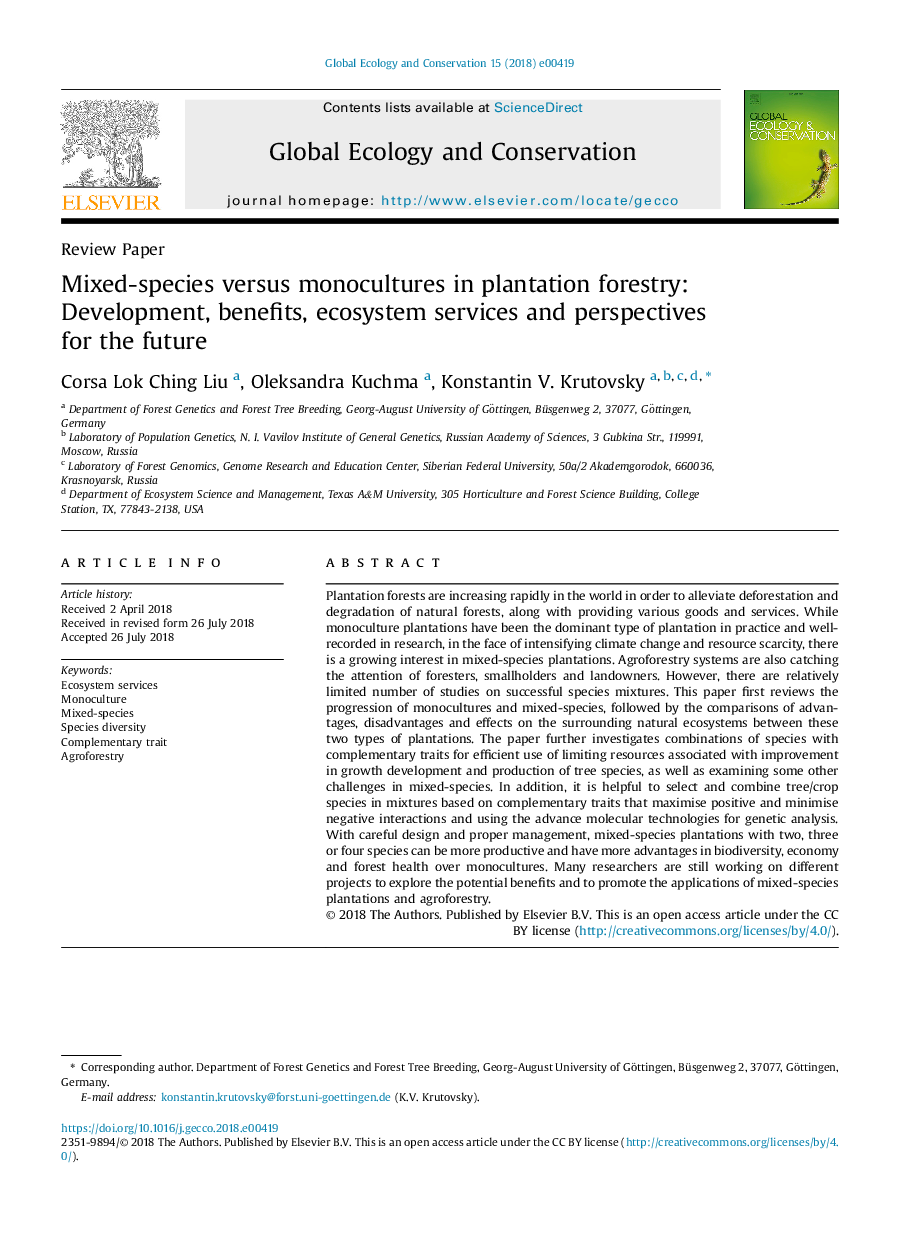| Article ID | Journal | Published Year | Pages | File Type |
|---|---|---|---|---|
| 8846194 | Global Ecology and Conservation | 2018 | 13 Pages |
Abstract
Plantation forests are increasing rapidly in the world in order to alleviate deforestation and degradation of natural forests, along with providing various goods and services. While monoculture plantations have been the dominant type of plantation in practice and well-recorded in research, in the face of intensifying climate change and resource scarcity, there is a growing interest in mixed-species plantations. Agroforestry systems are also catching the attention of foresters, smallholders and landowners. However, there are relatively limited number of studies on successful species mixtures. This paper first reviews the progression of monocultures and mixed-species, followed by the comparisons of advantages, disadvantages and effects on the surrounding natural ecosystems between these two types of plantations. The paper further investigates combinations of species with complementary traits for efficient use of limiting resources associated with improvement in growth development and production of tree species, as well as examining some other challenges in mixed-species. In addition, it is helpful to select and combine tree/crop species in mixtures based on complementary traits that maximise positive and minimise negative interactions and using the advance molecular technologies for genetic analysis. With careful design and proper management, mixed-species plantations with two, three or four species can be more productive and have more advantages in biodiversity, economy and forest health over monocultures. Many researchers are still working on different projects to explore the potential benefits and to promote the applications of mixed-species plantations and agroforestry.
Related Topics
Life Sciences
Agricultural and Biological Sciences
Ecology, Evolution, Behavior and Systematics
Authors
Corsa Lok Ching Liu, Oleksandra Kuchma, Konstantin V. Krutovsky,
